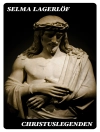In 'Ecclesiastical Hierarchy, ’ Pseudo-Dionysius the Areopagite delves into the intricate structure of the Church, exploring the spiritual and hierarchical relationship between God, angels, and humanity. Composed in the late 5th to early 6th century, this seminal text combines elements of Neoplatonism with Christian theology, employing a mystical literary style that invites readers to engage in profound reflection. The work systematically categorizes the celestial and ecclesiastical orders, presenting them as intermediaries that facilitate the ascent of the soul toward divine union, thereby influencing the broader discussions of hierarchy in both ecclesiastical and philosophical contexts during the early Christian era. Pseudo-Dionysius, whose identity possibly draws from the Athenian convert of St. Paul, encountered an environment marked by rich theological debate and metaphysical inquiry. His writings reflect a confluence of cultural influences that shaped early Christian thought, as he sought to articulate a coherent vision of how the divine interacts with the created order. Deeply influenced by Platonic thought, his works reveal his attempts to reconcile the transcendence of God with His immanence in the Church’s life. 'Ecclesiastical Hierarchy’ is a must-read for anyone interested in the intersections of theology, philosophy, and ecclesiology. It challenges readers to contemplate the mysteries of faith and the nature of spiritual ascent, ultimately serving as a vital resource for scholars and laypersons alike who wish to deepen their understanding of the spiritual and organizational dimensions of Christian practice.
O autorze
Pseudo-Dionysius the Areopagite, a pseudonymous author of the early Christian period, emerged as a significant and enigmatic figure in the development of Christian mystical and Neoplatonic thought. His collected works, collectively known as the 'Corpus Dionysiacum, ’ profoundly shaped the theological and philosophical landscape of the Middle Ages and beyond. Although his true identity remains shrouded in mystery, Pseudo-Dionysius is traditionally associated with the figure of St. Paul’s Athenian convert, Dionysius the Areopagite, mentioned in the Acts of the Apostles (Acts 17:34). However, modern scholarship places the authorship of his texts much later, around the end of the 5th or early 6th century, attributed to his synthesis of Patristic and Neoplatonic ideas, which were well developed by this time. Among his extant works, the 'Ecclesiastical Hierarchy’ is a central treatise that expounds on the angelic and ecclesiastical orders, reflecting the mystical theology through which one could achieve union with God through participation in the Church’s sacraments and hierarchy. Pseudo-Dionysius’ literary style combines intricate allegory and symbolic theology, characterized by a transcendent and apophatic approach to God, which means that he stressed the ineffability of the divine essence and the limitations of human language in describing the divine. His works, including 'The Divine Names, ’ 'The Mystical Theology, ’ and the 'Celestial Hierarchy, ’ remain foundational texts within both Eastern Orthodox and Western Christian mystical tradition.












